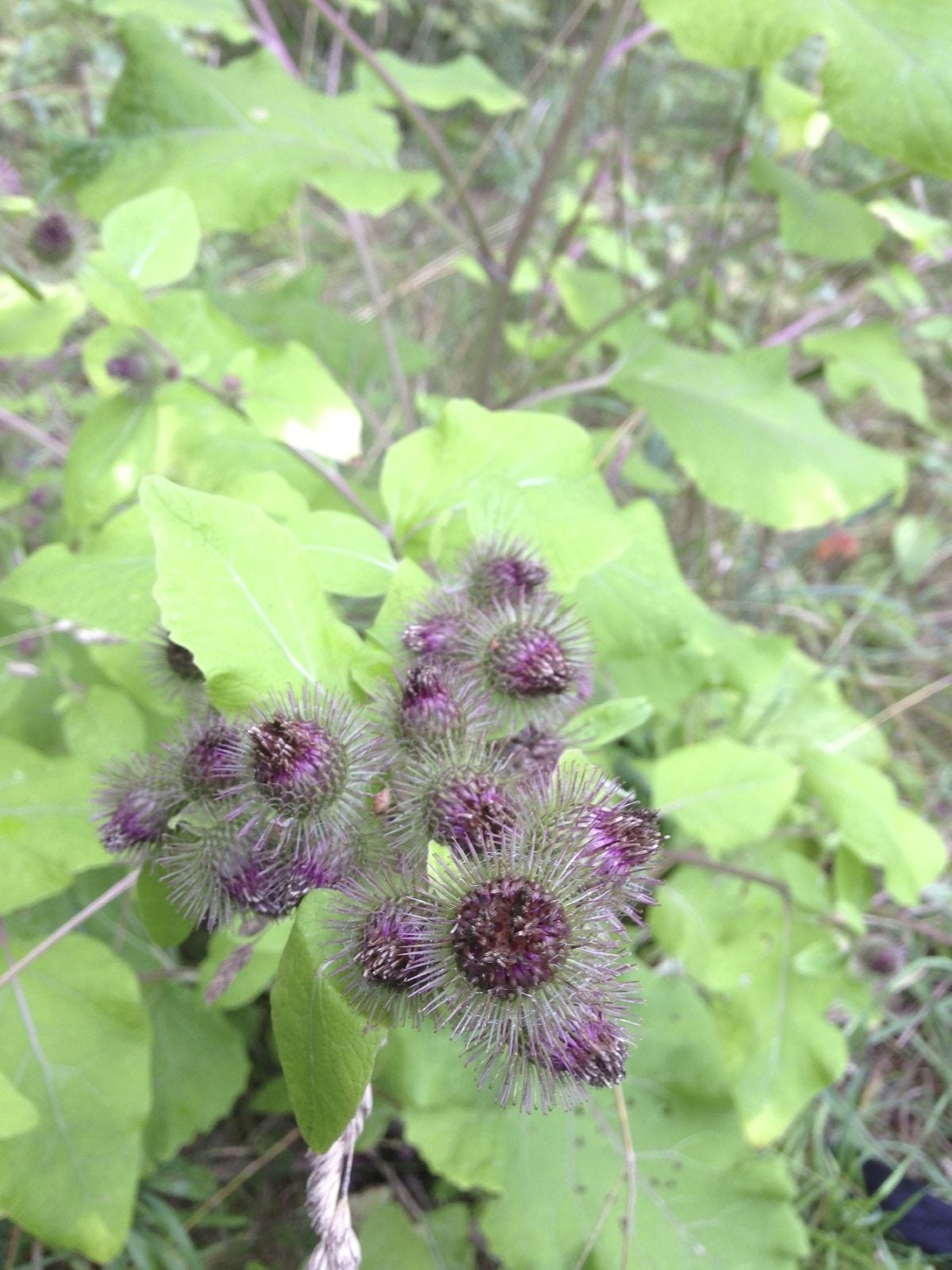Burdock Management & Tips For Controlling Common Burdock Weeds
Burdock is an invasive herbaceous weed with a long, taproot that may invade your lawn or garden. Mow it before it flowers and dig up the entire taproot.


Caroline Bloomfield
How To Kill Burdock In Lawns And Gardens
Burdock weeds are troublesome herbaceous plants that grow in pastures, along ditches and roadsides, and in many other disturbed areas across the United States.
The weed is recognized by its large, oval or triangular “elephant-ear” leaves. The upper surface of the dark green leaves may be smooth or hairy and the lower leaf surface is typically wooly and pale green.
The plant bolts in the second year and can reach heights of 3 to 10 feet (1-3 m). The small flowers, which are numerous, may be lavender, white, purple, or pink.
Why are burdock weeds so troublesome, and why is burdock management so critical? Read on to find out how to get rid of this weed.
Reasons for Controlling Common Burdock
Burdock's burs can cause real problems for livestock, resulting in eye infections, skin problems, and mouth sores. The plant can also host root rot, powdery mildew, and other diseases that can spread to agricultural plants.
It’s extremely difficult to eradicate burdock. Seeds spread quickly when the seed heads dry and break, scattering thousands of seeds far and wide. The weeds also spread when the prickly burs catch a ride on passing people or animals. Some people may experience unpleasant allergic reactions when the bristles contact the skin.
How to Kill Burdock
Digging, hand pulling, or plowing can be effective ways of controlling common burdock when the weeds are small. These techniques don’t work as well on larger plants because it’s difficult to remove the entire taproot.
Gardening tips, videos, info and more delivered right to your inbox!
Sign up for the Gardening Know How newsletter today and receive a free copy of our e-book "How to Grow Delicious Tomatoes".
You can mow taller plants, but mowing must be done before the plant has bloomed or you will simply spread the seeds. This is true with most weeds.
Unfortunately, burdock often grows in difficult, hard-to-access areas. Manual removal is often the only recourse, as well as the most environmentally friendly.
The challenge is removing burdock's long taproot which does not always come up in its entirety. Be sure to water the area before attempting to pull burdock weeds.
Horticultural vinegar poured into the hole made when a burdock weed is pulled, may effectively kill the rest of the taproot that has stayed in the ground. If you do use horticultural vinegar be sure to remember that this can affect other plants nearby as well as the soil. If possible, be selective and only saturate the immediate spots where the burdock is growing.

A Credentialed Garden Writer, Mary H. Dyer was with Gardening Know How in the very beginning, publishing articles as early as 2007.
- Caroline BloomfieldManager of Marketing Communications
-
 Looking For Plants To Give You The Soft And Fuzzies? Try These 5 Fuzzy Leaf Plant Options
Looking For Plants To Give You The Soft And Fuzzies? Try These 5 Fuzzy Leaf Plant OptionsLovers of texture, drama, silver foliage and tactile plants will adore these special sensory garden additions. These fuzzy leaf plant options will leave you all aglow
By Susan Albert
-
 Get Ready For A Summer Of Hummers! Grow These Full Sun Hummingbird Plants and Flowers
Get Ready For A Summer Of Hummers! Grow These Full Sun Hummingbird Plants and FlowersIf you’re lucky enough to enjoy a sunny backyard, make sure you are maxing out on your pollinator opportunities and grow these full sun hummingbird plants and flowers
By Tonya Barnett
